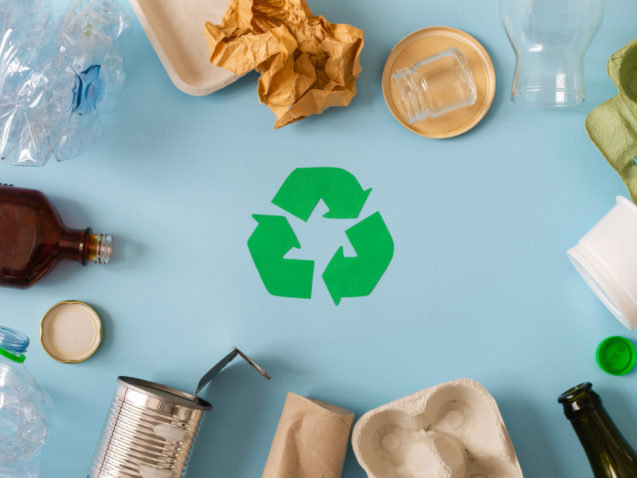As part of our #FoodFuture project we’re speaking to experts about how to best achieve more sustainable food systems. We spoke to UNESDA, Soft Drinks Europe, to find out how the European Commission’s latest packaging regulation will affect the sector’s circular economy ambitions.
The European Commission’s proposal for an EU Packaging and Packaging Waste Regulation finally came out last November. This proposal reflects the strong ambition of the EU to reduce packaging waste and accelerate the transition to a circular economy.
The European soft drinks sector, represented by UNESDA, fully supports the EU’s objective of driving packaging circularity forward. Our sector is on a journey towards delivering fully circular soft drinks packaging by 2030: UNESDA aims to reach 100% recyclable soft drinks packaging and use an average of 50% recycled content in PET bottles by 2025. UNESDA has also pledged that by 2030 we will achieve at least 90% collection for all our packaging (plastics bottles, metal cans and glass bottles), use only PET bottles made from 100% recycled and/or renewable material and increase the offer of reusable beverage systems.
While we remain steadfast in our commitment to make our packaging fully circular, we cannot do it alone. The EU Packaging and Packaging Waste Regulation has a crucial role to play in providing our sector with the right enablers to help us fulfil our circularity commitments. We are supportive of this Regulation, but we should acknowledge the complexity of regulating at EU level without understanding the various local realities across Europe, in particular in areas such as Deposit Refund Systems and reusable packaging.
We have put forward suggestions for crucial improvements to be implemented in the EU Packaging and Packaging Waste Regulation to make it more supportive. Here’s what we propose.
Amendments needed to the minimum requirements for efficient Deposit Refund Systems
It is positive that the EU Packaging and Packaging Waste Regulation supports the wider rollout of Deposit Refund Systems (DRS) and recommends minimum requirements to ensure they are well-designed. However, some key elements necessary for the set-up of new efficient DRS across Europe are still not included in the Regulation, such as the need for the DRS to be run by the industry participating in the DRS and the need for an exemption from “composition” labelling for packaging covered by a DRS. The latter will avoid consumer confusion as, in the case of packaging covered by a DRS, the only relevant information to allow the consumer to dispose of its packaging correctly is the DRS label or marking itself.
Another essential condition that needs to be created in the minimum requirements is a fair access right to recycled PET for beverage companies financing the DRS. This legal instrument will ensure that beverage packaging collected via the DRS is used in priority in new beverage packaging as a way to prevent its downcycling and comply with the mandatory recycled content targets set out in the Single-Use Plastics Directive and the EU Packaging and Packaging Waste Regulation.
How can the proposed recycled content targets be achieved? Only with a fair access right to the necessary feedstock
High-quality recycling of food-grade material is the way forward to maintain a closed-loop and reach full circularity of beverage packaging, and both our sector and the NGO community are in agreement that it needs to be further promoted.
We know that downcycling of PET coming from beverage bottles is a major issue with an estimated 69% of PET beverage bottles getting transformed into other non-food products – like polyester textiles (60%), automobile or toys -, without the possibility of being recovered and recycled back into new bottles. This results in a considerable shortage of food-grade PET for our sector.
Without the necessary access to food-grade recycled material it won’t be possible for the beverage industry to meet the mandatory EU recycled content targets and its own voluntary commitments (50% by 2025 and up to 100% by 2030), whilst complying with EU food safety requirements.
That’s why the EU should create a fair access right to recycled feedstock and promote high-quality recycling in the EU Packaging and Packaging Waste Regulation. It will enable all beverage manufacturers to have the necessary access to the food-grade recycled material issued from the packaging they put on the market and which was successfully collected. This will be particularly helpful for SMEs, which represent 95% of the beverage industry, and are particularly at risk of not complying with their legal obligations without a support mechanism in place.
Make it work: a realistic integration of more reusable solutions
The EU Packaging and Packaging Waste Regulation includes targets to increase reusable beverage packaging and refill with the aim of reducing packaging waste. Our sector fully supports the EU’s goal to increase reuse and refill and we are already offering several solutions, from refillable bottles to home dispensers.
However, our ability to reach those goals relies on how those targets are designed and whether the necessary enablers are in place.
The integration of more reusable options on the European market needs to be done properly. We must not underestimate the significant costs and changes in manufacturing, bottling, logistics, distribution and retail that the transition to more reuse will imply. A PwC study for UNESDA estimates a cost of more than €16 billion to achieve 10% refillable PET by 2030 in the EU. More importantly, we need to ensure that the investments made result in a positive environmental outcome.
This brings us to the question of how the EU Packaging and Packaging Waste Regulation should promote the integration of more reusable packaging in a realistic way. If targets are being set in each Member State, a thorough environmental and economic impact assessment, not only at EU level but also at the national level, is required. The current impact assessment of the European Commission just fails in this regard.
It is our belief that the reuse targets should provide the necessary flexibility to invest where reusable solutions make more sense than their single-use recycled counterpart from an environmental perspective. Targets set on each manufacturer, each final distributor and in each Member State are too prescriptive as to where investments need to be made and do not guarantee a positive environmental outcome.
Furthermore, we consider that the targets should cover the full scope of reusable and refill solutions available on the EU market, including refill-at-home solutions, because all of them will contribute to reducing beverage packaging and packaging waste.
Lastly, the timing to develop the methodology for the calculation of reuse targets is currently set for December 2028 while the first targets are due by 2030. How achievable is this? The methodology needs to be defined as soon as possible and at least 5 years ahead of the deadline to achieve the targets to allow our sector to plan its investments.
Improving the EU Packaging and Packaging Waste Regulation is key to putting us on the path to fully circular beverage packaging. We will continue collaborating with EU decision-makers to create the necessary supportive legislative conditions to get the future of beverage packaging right.




